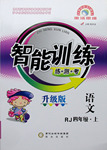题目内容
完形填空。(每小题2分,共20分)
根据短文内容,从A、B、C、D 四个选项中选出一个能正确填入相应空格内的最佳答案,并把答题卡上对应题目的答案标号涂黑。
Why do we take school trips? School trips are a great chance to learn outside the classroom 41 new and interesting ways. For example, on a trip to a farm, we can see 42 of the things we 43 about so far in biology lessons. While 44 science
museums, we can see science in action.
Where can we go on a school trip? In Japan, cherry (樱花) trees are blossoming (开花) by the beginning of the year for students to take school trips. School children have picnic lunches, sing songs and dance under the trees. They 45 go boating and hiking around the lakes and hills. Some kids even take baths in hot springs. If there is 46 , don’t worry. They will go to a museum 47 .
In China, students often take school 48 to parks, museums or to visit a mountain. But nowadays it’s very popular to take an outward bound(野外拓展) trip. Students can learn about survival skills.(生存技能)
In the UK, students go to many interesting places. They 49 shells(贝壳) on the seaside . Kids may also learn about 50 when they go to a castle(城堡) or a famous old home.
【小题1】.
| A.by | B.with | C.in | D.on |
| 【小题2】 |
|
| 【小题3】 |
|
| 【小题4】 |
|
| 【小题5】 |
|
| 【小题6】 |
|
| 【小题7】 |
|
| 【小题8】 |
|
| 【小题9】 |
|
| 【小题10】 |
|
【小题1】C
【小题2】D
【小题3】C
【小题4】A
【小题5】C
【小题6】D
【小题7】A
【小题8】B
【小题9】A
【小题10】D
解析试题分析:通过阅读短文我们可以知道学校组织的郊游的一些好处,我们可以从郊游中 学到一些什么。并重点介绍了日本,中国和英国的小学生在郊游中可以学到哪些知识。
【小题1】结合上下文可知句意为:以一种新的有意思的方式。way表示方法时,一般和介词in搭配使用,故选C。
【小题2】不定代词辨析。Every每个,一般后面不接介词of;both表示两个都;none用于三个以上表示一个也没有;some一些。结合语境可知选D,我们学到的东西中的一些。
【小题3】根据时间副词so far,到目前为止,可知本句为完成时态,听things是复数,故选C。
【小题4】考察非谓语动词。句意:当我们参观科学博物馆时,我们可以看到科学在行动。现在分词表示正在进行的伴随性的动作,travel为不及物动词,意为旅游,故选A。
【小题5】结合上文可知这是对上文动作的补充,句意为:他们也划船,在湖泊小山周围徒步旅行。故选C。
【小题6】there be句型表示某处有某物,故选D,不可数名词,雨。句意为:如果有雨。
【小题7】副词辨析。Instead反而,一般用于句尾。Instead of代替,后面接名词或名词性短语;rather than而不是;rather宁可,相当。结合上文可知本句意思为。他们却可以去博物馆。
【小题8】结合上文school trips可知选B。
【小题9】结合下文可知句意为:他们在海边捡贝壳,故选A捡起。
【小题10】根据下文when they go to a castle(城堡) or a famous old home.可知他们学到的是历史知识,故选D。
考点:考察在说明性短文中词汇的运用能力
点评:本题短文内容不难理解,但是部分小题与上下文联系不大,部分题型甚至可以独立成题。因此在解答中有必要认真分析,把他们当成一个独立的选择题来对待。完成后多读几遍,看看上下文是否语句通顺,符合逻辑关系。

 智能训练练测考系列答案
智能训练练测考系列答案完形填空。(每小题2分,共20分)
根据短文内容,从A、B、C、D 四个选项中选出一个能正确填入相应空格内的最佳答案,并把答题卡上对应题目的答案标号涂黑。
Why do we take school trips? School trips are a great chance to learn outside the classroom 41 new and interesting ways. For example, on a trip to a farm, we can see 42 of the things we 43 about so far in biology lessons. While 44 science
museums, we can see science in action.
Where can we go on a school trip? In Japan, cherry (樱花) trees are blossoming (开花) by the beginning of the year for students to take school trips. School children have picnic lunches, sing songs and dance under the trees. They 45 go boating and hiking around the lakes and hills. Some kids even take baths in hot springs. If there is 46 , don’t worry. They will go to a museum 47 .
In China, students often take school 48 to parks, museums or to visit a mountain. But nowadays it’s very popular to take an outward bound(野外拓展) trip. Students can learn about survival skills.(生存技能)
In the UK, students go to many interesting places. They 49 shells(贝壳) on the seaside . Kids may also learn about 50 when they go to a castle(城堡) or a famous old home.
1..
|
A.by |
B.with |
C.in |
D.on |
|
2. |
|
|
3. |
|
|
4. |
|
|
5. |
|
|
6. |
|
|
7. |
|
|
8. |
|
|
9. |
|
|
10. |
|